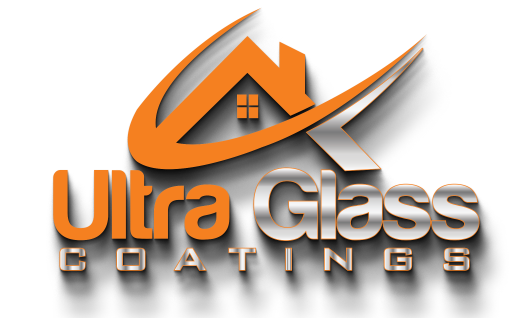Home > Press > New nanoparticle could make cancer treatment safer, more effective: Scientists create a tiny particle for use with focused ultrasound on solid tumors
Abstract:
Researchers have created a new kind of nanoparticle that could make ultrasound-based cancer treatments more effective and safer, while also helping prevent tumors from coming back.
New nanoparticle could make cancer treatment safer, more effective: Scientists create a tiny particle for use with focused ultrasound on solid tumors
Portland, OR | Posted on May 16th, 2025
The study, published in the journal Nano Letters, explores a way to make high-intensity focused ultrasound less harmful to healthy tissues.
Oregon Health & Science University was the first hospital in Oregon to offer prostate cancer treatment using a robotic-assisted high-intensity focused ultrasound device. Researchers in the OHSU Knight Cancer Institutes Cancer Early Detection Advanced Research Center, or CEDAR, wanted to improve a category of focused ultrasound known as mechanical tumor ablation.
This technique uses energy to destroy solid tumors without surgery. However, using focused ultrasound to treat solid tumors has two major challenges: it usually needs a lot of energy, which can create heat and harm healthy tissue, and even if the tumor is broken up, some cancer cells might survive and allow the cancer to come back.
In this study, we developed a tiny particle about a thousand times smaller than the width of a sheet of paper that helps treat cancer more effectively, said Michael Henderson, B.A., the studys co-lead author.
These nanoparticles are engineered with small bubbles on their surface. When targeted with focused ultrasound, the bubbles pop and release energy that helps destroy tumors more precisely, he said. The particles are also coated with a special molecule called a peptide, which helps them stick to tumors and enter cancer cells more easily.
To make the therapy even more powerful, the scientists also attached a potent chemotherapy drug to the peptide on the nanoparticles surface. Li Xiang, Ph.D., a postdoctoral scholar with CEDAR and the studys other co-lead author, describes this method as a one-two punch.
The ultrasound physically destroys the tumor, and the drug helps eliminate any leftover cancer cells that might cause the tumor to return, she said.
In preclinical models of human melanoma, this combination led to deeper tumor destruction and more effective drug delivery than either treatment alone.
Our nanoparticles reduce the energy needed for ultrasound treatment by up to 100-fold, Henderson said. This allows us to use short ultrasound pulses to disrupt tumors mechanically, without overheating surrounding tissue.
When tested in mice with human melanoma tumors, the combined treatment ultrasound plus the drug-loaded nanoparticles led to significantly better outcomes than either treatment alone. In some cases, tumors completely disappeared and improved overall survival for more than 60 days with no major side effects observed.
The new platform could eventually be used for other treatments, including infections or cardiovascular disease, where a mix of mechanical and drug therapy could be helpful.
What began in 2018 as research into nanoparticle-assisted tumor ablation has evolved into a multifunctional platform enabled by simple mixing were now excited to bring this into immunotherapy, said Adem Yildirim, Ph.D., the studys senior author and assistant professor of oncological sciences in the OHSU School of Medicine and the OHSU Knight Cancer Institute. By combining focused ultrasound with smart drug delivery, were seeing a promising new way to fight cancer more effectively and reduce the chance of it coming back.
Henderson said future combined treatments, in this case ultrasound and immunotherapy, could help go beyond what each therapy does on its own.
####
About Oregon Health & Science University
Deep background at OHSU
Henderson is early in his career, but he has an unusually deep background at OHSU.
Henderson was born at OHSU Hospital in 1998 and raised by an OHSU-trained physician. He is now a Ph.D. student in biomedical engineering and a CEDAR member.
There were a few pitstops along the way for a bachelors degree at Carroll College in Montana and a stint under the tutelage of Gaurav Sahay, Ph.D., in the OHSU/Oregon State University College of Pharmacy, but now hes back home at OHSU once again.
Henderson aspires to be a physician-scientist who can translate his research to the bedside for patients and currently is working under the guidance of Stuart Ibsen, Ph.D., and Yildirim, at OHSU. His work focuses on developing methods to improve the effectiveness of immunotherapies and enrich liquid biopsy using noninvasive responsive nanomaterials and protein blockers.
The new publication represents an important early milestone.
While this work is still in the early stages, it lays the foundation for a new kind of nanoparticle-based therapy that could improve how we approach hard-to-treat tumors, he said.
For more information, please click here
Contacts:
Angela Yeager
Oregon Health & Science University
Copyright © Oregon Health & Science University
If you have a comment, please Contact us.
Issuers of news releases, not 7th Wave, Inc. or Nanotechnology Now, are solely responsible for the accuracy of the content.
News and information
Cancer
![]()
Tumor microenvironment dynamics: the regulatory influence of long non-coding RNAs April 25th, 2025
Possible Futures
Nanomedicine
![]()
Tumor microenvironment dynamics: the regulatory influence of long non-coding RNAs April 25th, 2025
![]()
Next-generation drug delivery innovation! DGIST develops precision therapeutics using exosomes April 25th, 2025
Announcements
Interviews/Book Reviews/Essays/Reports/Podcasts/Journals/White papers/Posters
Nanobiotechnology
![]()
Tumor microenvironment dynamics: the regulatory influence of long non-coding RNAs April 25th, 2025
![]()
Next-generation drug delivery innovation! DGIST develops precision therapeutics using exosomes April 25th, 2025










